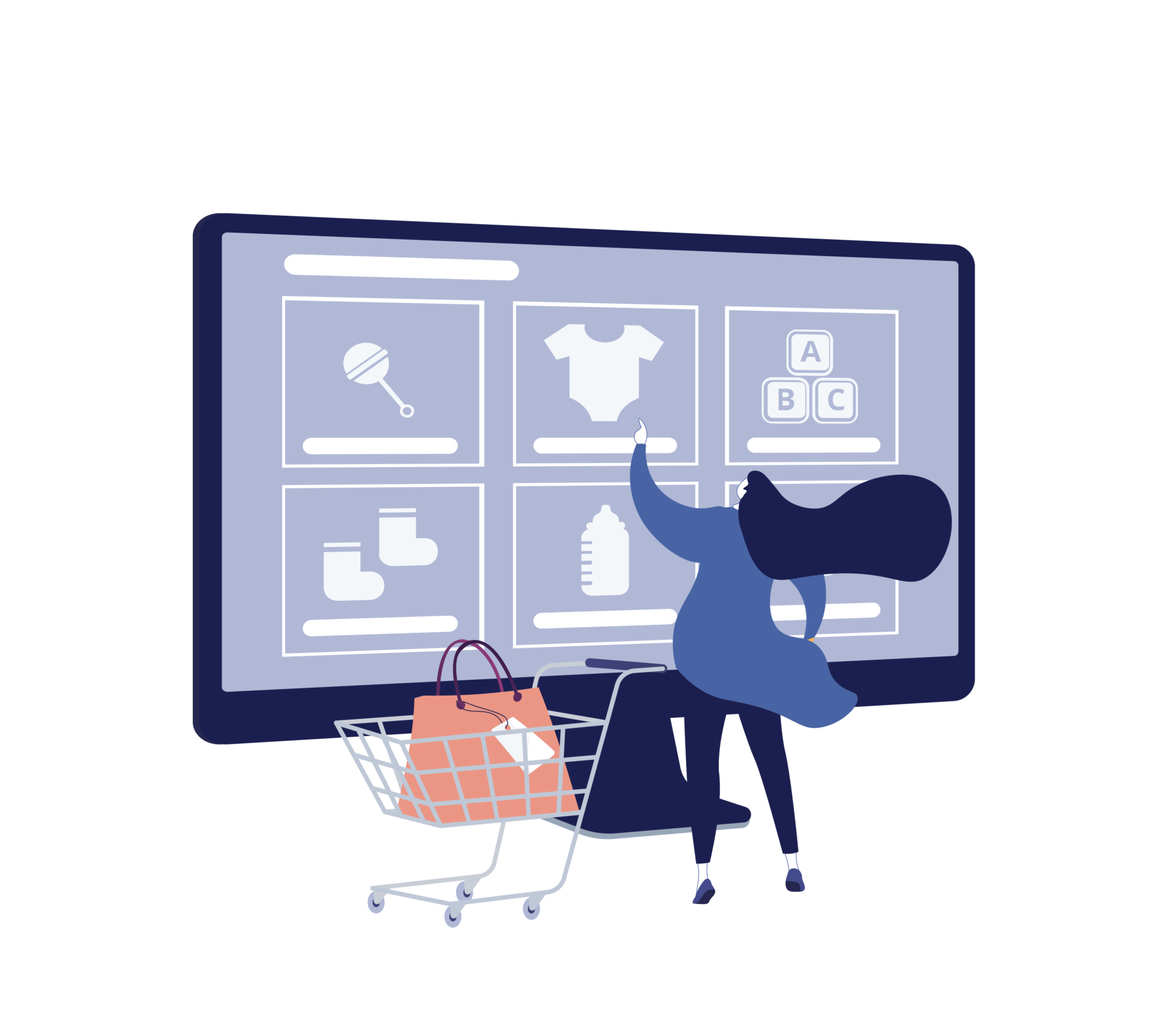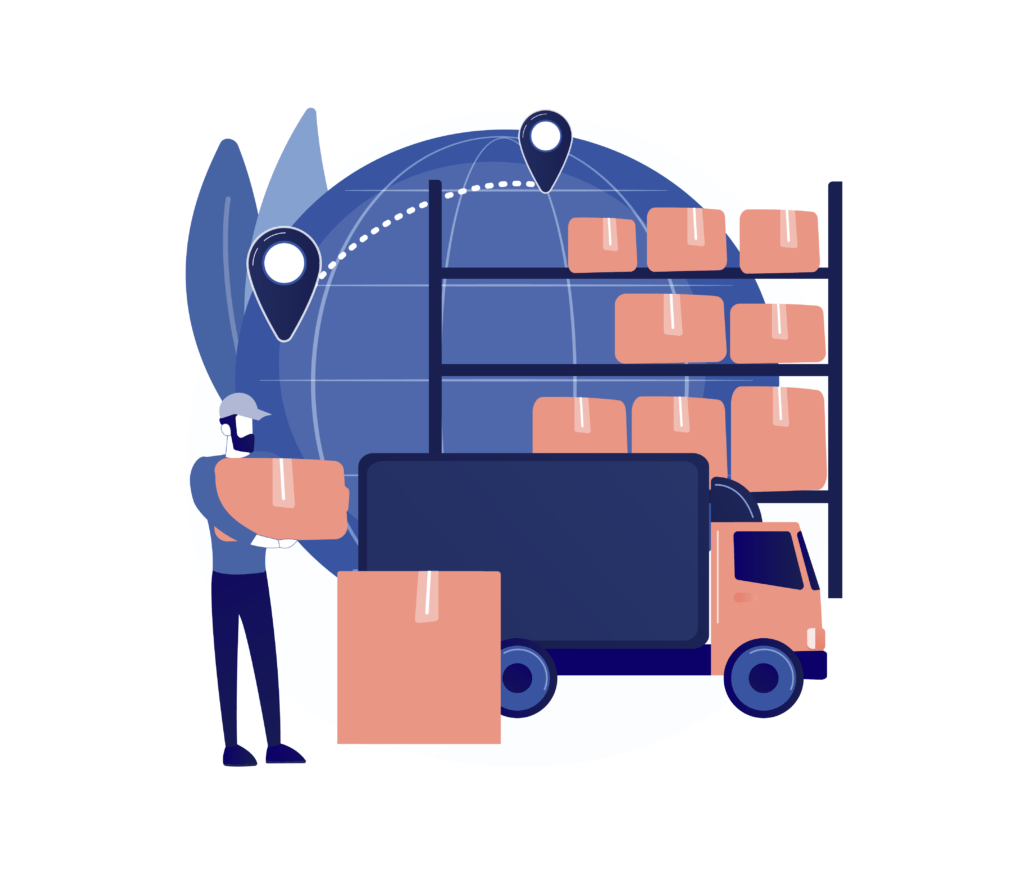In 2020, one of the fastest and easiest ways to start a new business is to choose e-commerce. You have two main options to choose from: dropshipping and Amazon FBA. Although they may seem similar, key differences between them may mean one is better for you than the other. To decide which that is, you need to assess the pros and cons of dropshipping vs Amazon FBA.
However, before we can pit the two against each other, it’s important to understand what we mean by these terms.
What Is Dropshipping?
Dropshipping (or drop shipping) involves creating an e-commerce store of products from third parties. When someone purchases one of the products, you place an order with the wholesale supplier. The supplier then ships the item straight to the customer.
Your role in this type of e-commerce business is to market products, connecting customers with retailers. As you pay the wholesale price for the product and the customer pays the retail price, your profit is the difference between these two prices.
What Is Amazon FBA?
One way to sell on Amazon is to use the FBA program, which stands for Fulfillment by Amazon. You ship the products you want to sell to an Amazon warehouse. Then, when you receive an order for an item, Amazon will ship the product to your customer for you.
It’s important to note that our comparison is dropshipping vs Amazon FBA, not dropshipping vs Amazon. This is because you can actually run a dropshipping business on Amazon — you just need to adhere to Amazon’s policy.
With this clear, let’s return to the main question — which is better: dropshipping vs FBA?
Dropshipping vs Amazon FBA
To start, we need to consider the pros and cons of both dropshipping and Amazon FBA.
Pros of Dropshipping
Dropshipping is cost effective. To start a dropshipping business, you need a minimal upfront investment. In fact, the only costs are those associated with setting up a website.
In addition, risk is low. As you never own products, you can build relationships with as many wholesalers as you like and fill your e-commerce store with products. If some of these products never sell, you’ve only wasted time marketing them — you don’t need to figure out how to get rid of the merchandise.
Of course, making the right decisions from the start and selling the vast majority of your products is much better. In fact, choosing well gives you the potential to sell a huge number of products in a short time. Even if the profits for each product are quite small, you’ll see a significant return on investment.
Dropshipping is also convenient. As you will never handle any of the products, you just need to focus on building an excellent e-commerce store and finding reputable suppliers. You have no shortage of options for wholesale suppliers, which is one reason why dropshipping is such a popular business model. Plus, you can find products in practically any niche.
Cons of Dropshipping
Although there is less chance you’ll waste your investment with dropshipping, the practice is far from risk free. You need to make sure you partner only with legitimate wholesalers, as many scam artists prey on entrepreneurs who are new to dropshipping. Finding genuine suppliers takes time and effort.
Another issue is that dropshipping is highly competitive. Many people are attracted to this type of business because it’s so easy to get started. As a result, profit margins can be small. To see a decent return on investment from your venture, you’ll either need to sell a lot or find a profitable niche.
Pros of Amazon FBA
The great thing about Amazon FBA is that it’s highly scalable. You can start out by selling only a few products and build up as your revenue grows. In addition, customers like buying products from FBA sellers, as items are often eligible for free shipping and Amazon Prime.
Choose the right products, and your business will grow fast. You’ll have instant access to a huge number of customers who feel confident about buying from you because of the Amazon name. Furthermore, you can rely on Amazon to provide these customers with a great service — shipping products on time and dealing with complaints and returns for you.
Cons of Amazon FBA
Like dropshipping, it’s up to someone else to handle shipping on Amazon FBA. However, as you do need to send the items to an Amazon warehouse, this model doesn’t eliminate shipping on your end entirely.
Plus, there’s the fact that you’ll need to own the products in advance, as opposed to purchasing them only when a customer places an order. There are a couple disadvantages to this. First, you’ll need to pay for Amazon warehouse space until you make a sale, which can quickly become expensive. Second, it’s possible you may end up buying products that never sell. Both of these mean that the cost of making mistakes is higher.
Another disadvantage of Amazon FBA is the lack of freedom. It’s important to read regulations carefully before setting up a business on the platform. If you break a rule, you could be suspended or your store could be removed entirely.
Finally, the structure of Amazon FBA means it’s more difficult to see what’s working. Reporting is limited and there’s some amount of guesswork involved.
Amazon FBA vs Shopify Dropshipping
One of the most popular places to set up a dropshipping e-commerce store is Shopify. How does Shopify specifically compare to Amazon FBA?
Pros of Shopify
One advantage of using Shopify is you can create a brand for your e-commerce business. Everything from the look and experience of using your store to the products you sell contribute to how customers feel about your business.
Plus, after a purchase, you can use customers’ email addresses to send them special offers and let them know about discounts. A successful business has a list of loyal customers who make repeat purchases.
Cons of Shopify
Of course, there are some disadvantages to using Shopify. The main one is setting up your store. It’s much more complex to create a store on Shopify than Amazon. If you have no knowledge of web development, you’ll likely find it too difficult — even using templates. To create a professional-looking store (which will be key to your success), you’ll most likely need to hire someone.
You’ll also need to use a variety of marketing tactics to ensure people can find your store. On Amazon, you instantly have access to a wide audience and you can always use ads if you want to reach more customers. To be successful with a Shopify store, however, it’s best to use a combination of email newsletters, social media marketing, SEO, ads, and just about any other digital marketing tactic you can think of.
Amazon FBA vs Dropshipping vs Affiliate Marketing
There’s actually one final option to consider: affiliate marketing. This involves promoting products from a third party and linking to them with a unique URL. When a customer makes a purchase after using your affiliate link, you receive a share of the revenue. Even if the customer comes back and makes the purchase slightly later, you’ll still gain a commission. This is because the affiliate tracking cookie remains in the visitor’s browser for a short time.
Pros of Affiliate Marketing
Like dropshipping, you never own any inventory with affiliate marketing. However, instead of your profit being the difference between the wholesale and retail price, you make a commission. This can is typically between 5 percent and 30 percent of the final sale, which is close to the average profit for dropshipping.
It’s easy to find an affiliate program to join for free. You can then run your business at a low cost. Your only expenses will be the domain and hosting for your site, plus professional web design and development — if you lack these skills yourself.
There are also some advantages of affiliate marketing over dropshipping. There’s no need to create an e-commerce store nor handle customer support — you just market the products on your website.
Cons of Affiliate Marketing
No matter how much you grow your website, it will be much more difficult to build a customer base with affiliate marketing than either Amazon FBA or dropshipping. You are always dependent on your retailers and each sale is just a one-off purchase. If customers like the products, they will buy directly from the retailer next time.
Another disadvantage is the lack of control. You have no choice over prices for products nor what commission you receive. You may find you make far less some months than others — particularly if you don’t perform enough in-depth research. It’s important to choose a niche that has low competition: narrow enough to allow you to target a specific audience but broad enough that you will have plenty of customers.
How to Decide What’s Right for You
Out of dropshipping, Amazon FBA, and affiliate marketing, there’s no clear winner. Any of them can lead to a successful business venture. However, after assessing the pros and cons of each, you’ll likely feel more attracted to one than the others.
For instance, if you want to get started immediately to build a brand with a small investment, dropshipping is likely your best option.
However, if you already have some merchandise you want to sell, it makes sense to take advantage of the FBA program. Plus, over the long term, you’ll find that Amazon FBA requires the least effort.
Finally, if you want to focus entirely on marketing, but you’re less interested in the e-commerce side, choose affiliate marketing.
Whatever option you choose, it will help to have a someone supporting you. Delegate tasks that you find boring and time-consuming to an e-commerce virtual assistant from MYVA360.





